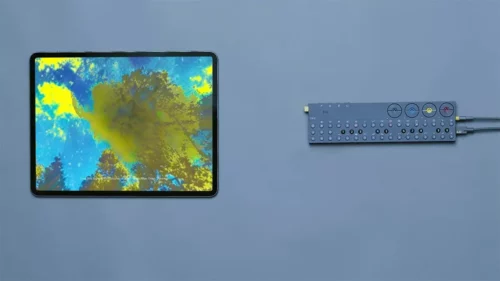Teenage Engineering OP-Z is being used to power an interactive AI art installation inspired by the synesthesia phenomenon
Teenage Engineering has revealed that it’s been working with design studio Modem on an experiment. Specifically, the team at Modem has conducted a research project using TE’s OP-Z, placing it at the heart of an interactive art installation and creating a digital extension that translates music into AI-generated visuals.
It might not have the same high profile or hipster cache as the OP-1, its stablemate, but the OP-Z is something different – a multimedia instrument. This is demonstrated nicely in Modem’s project, which was inspired by the “perceptual phenomenon” of synesthesia.
This is a neurological condition in which information meant to stimulate one of the senses actually stimulates several of them and is commonly associated with listening to music. As the properties of the music change, you may unwittingly experience sensations of colour, shape and movement.
This concept of synesthesia is what guided Modem’s thinking. The studio worked with Bureau Cool to connect the OP-Z to an AI system known as Stable Diffusion. The Stable Diffusion platform translates musical properties into hypnotic visuals – is capable of creating “original, realistic images and art from a description in natural language”.
The result is that different MIDI signals relating to pitch, key, notes, rhythm and BPM are sent from the OP-Z and translated into Stable Diffusion prompts using synesthesia theory. Stable Diffusion then generates images based on the prompts, which describe colour, shapes and movements of the imagery. These are then queued up and played.
You can get a taste of what the OP-Z Stable Diffusion project looks like on the Modem website. The OP-Z is available now.


























